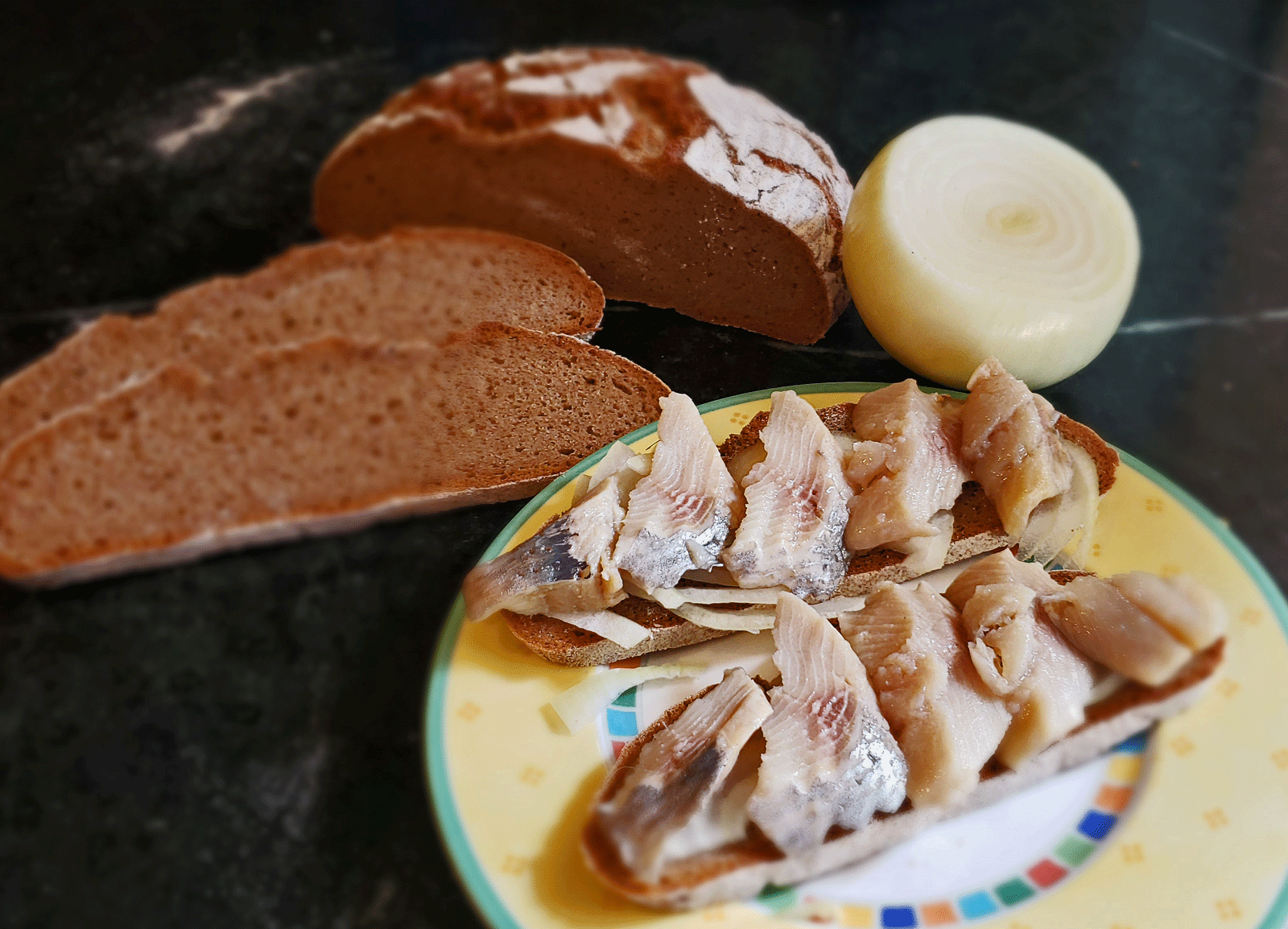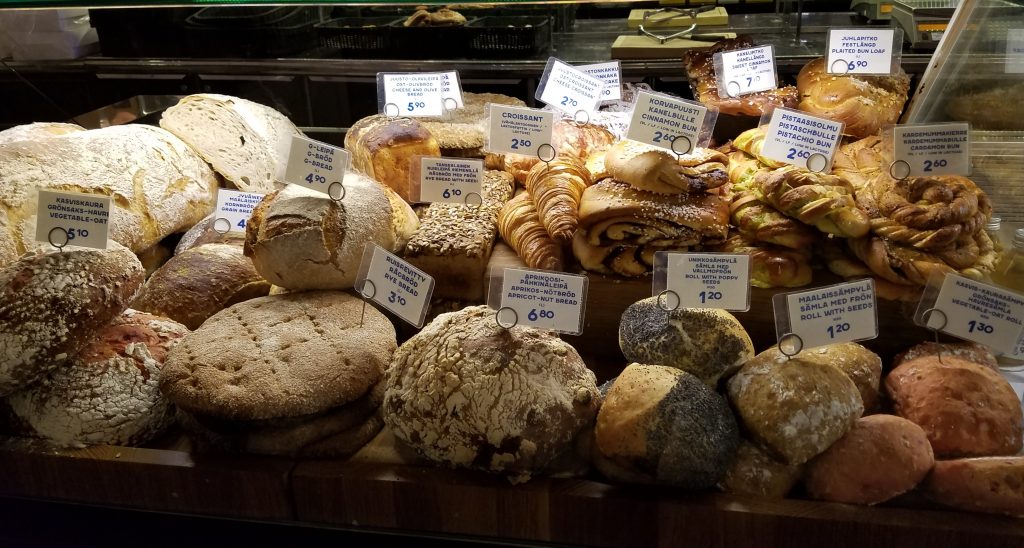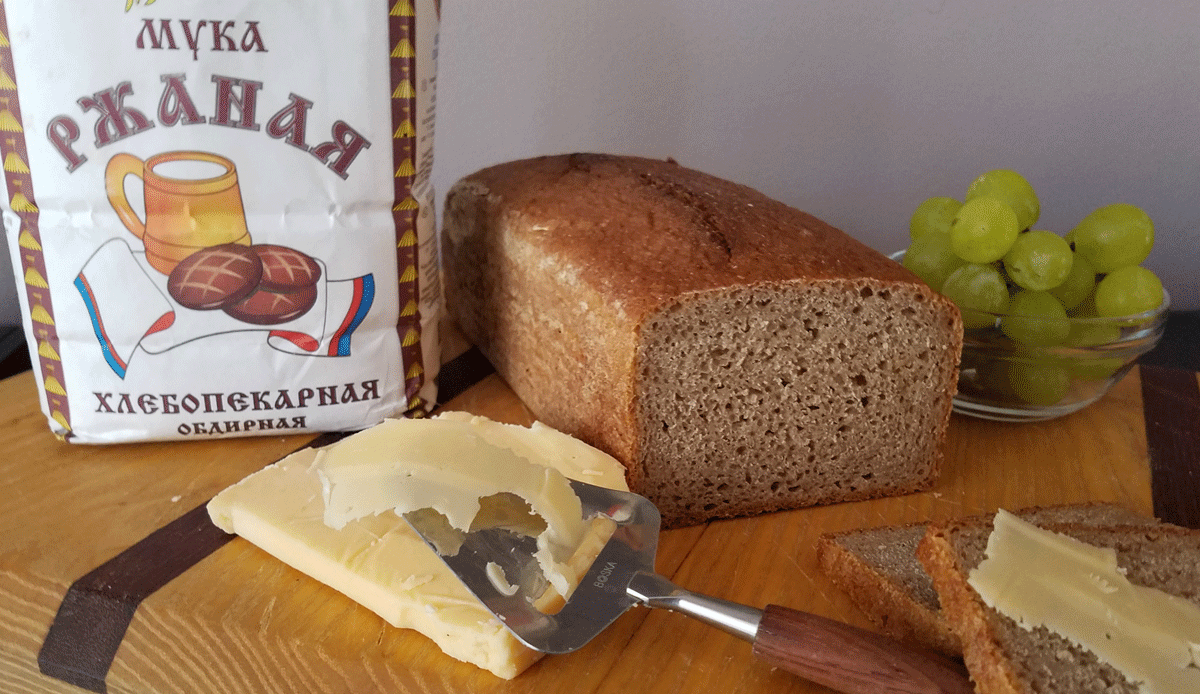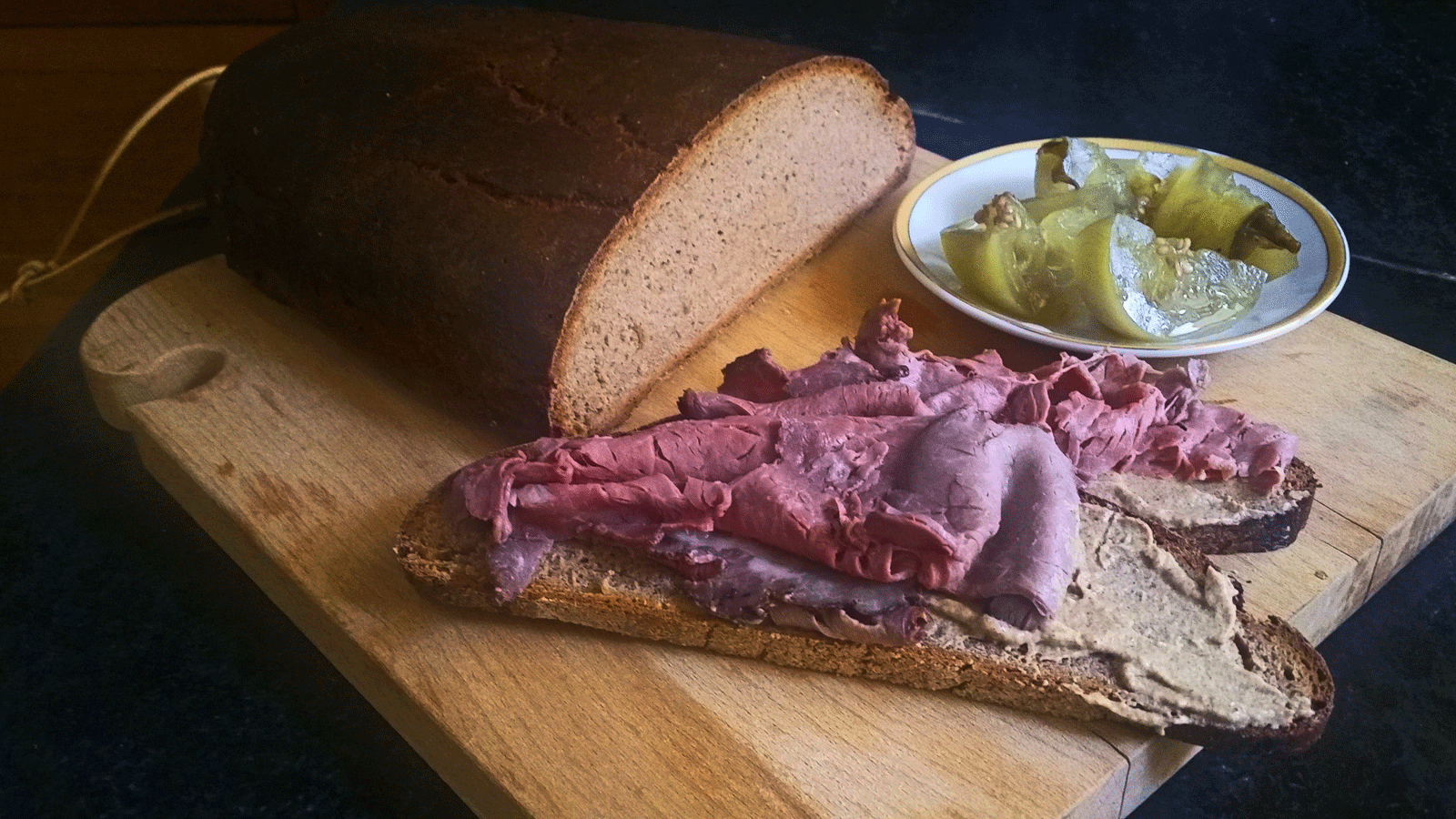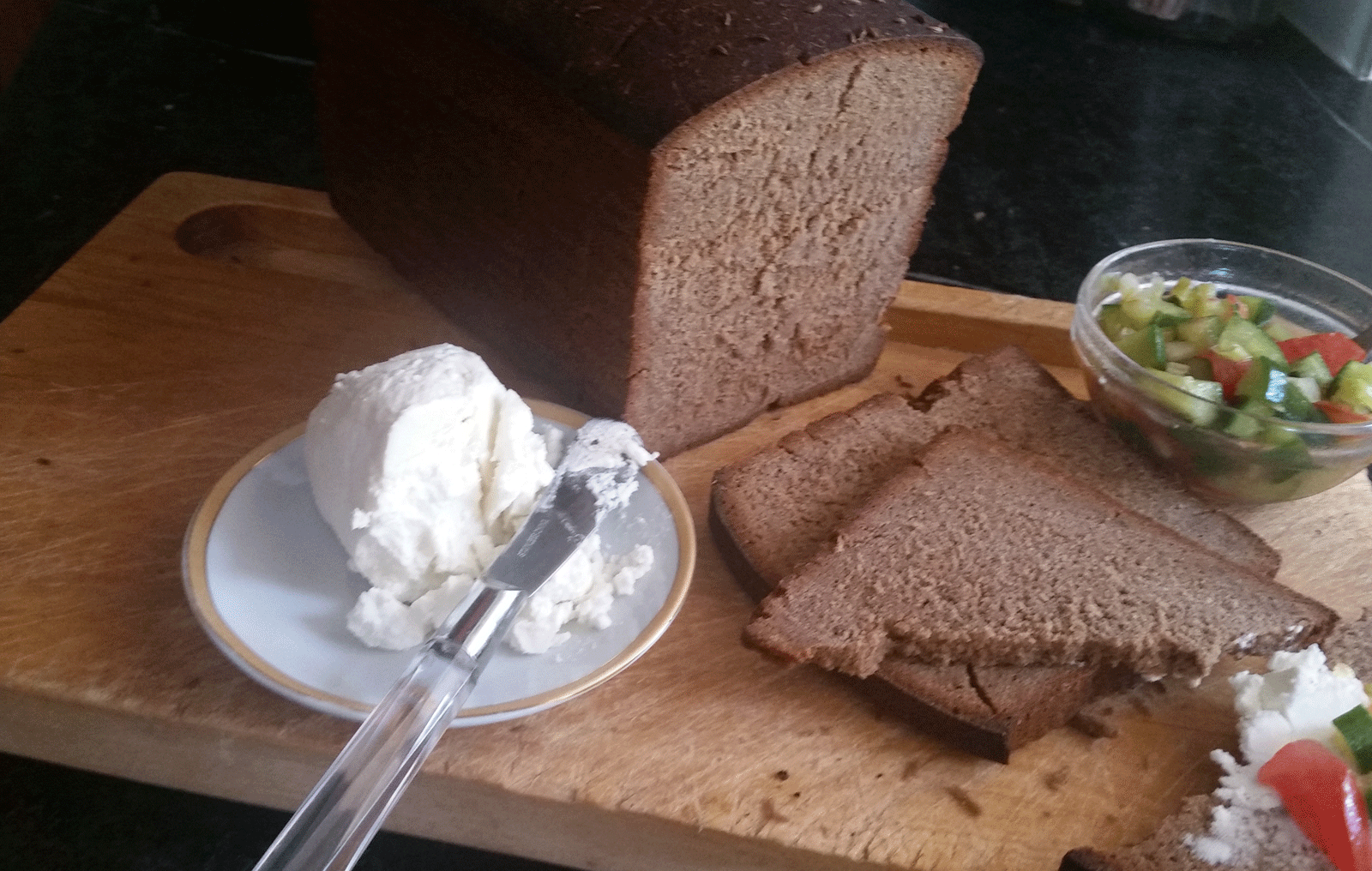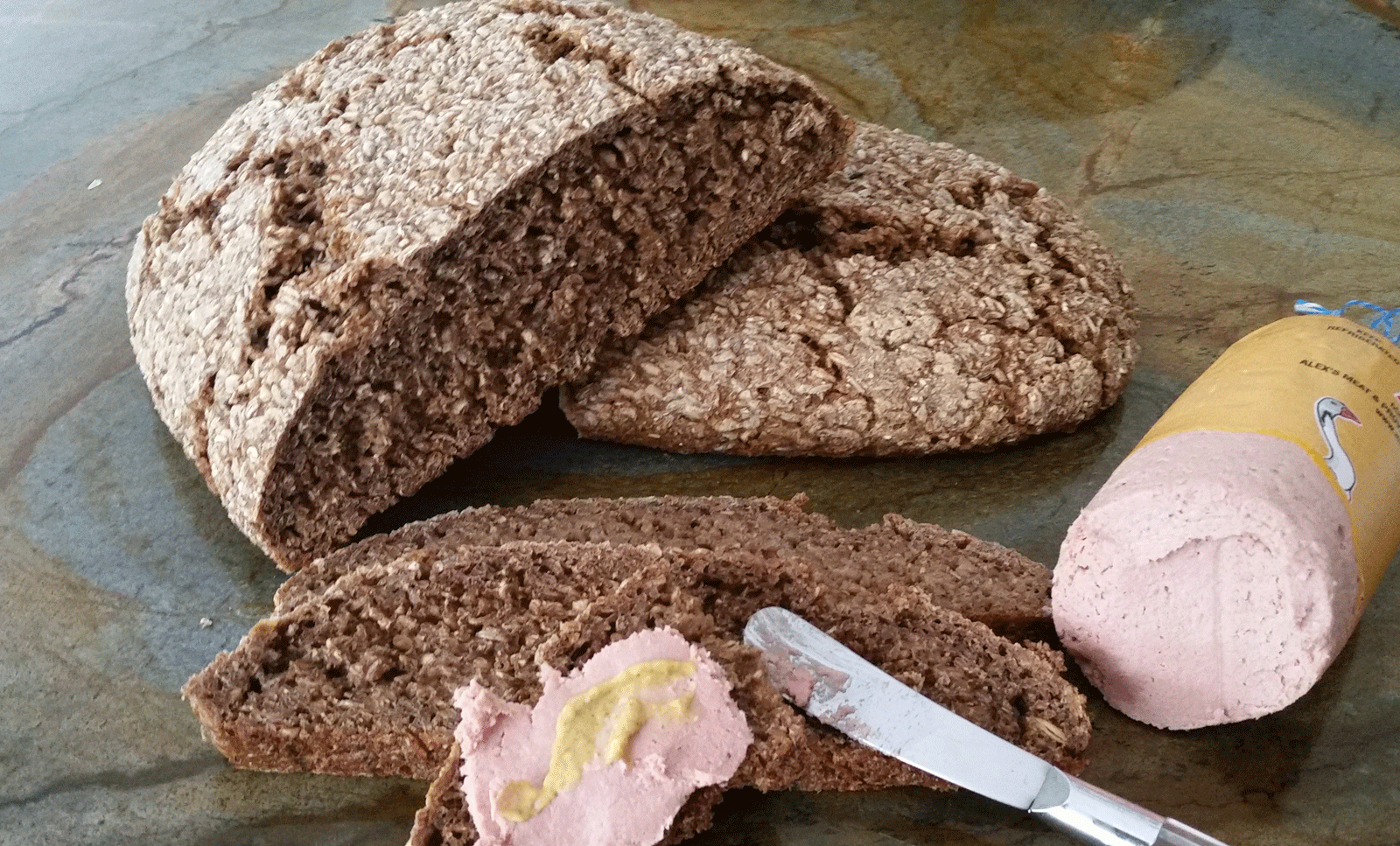Russian/Baltic
Reflections: Baltic Rye Tour 2018
It’s been a couple of weeks since my return from The Rye Baker Baltic Rye Tour 2018 – enough time for the impressions and memories to mellow and integrate and for me to gain some perspective on a whirlwind of sights, sounds, tastes and human interactions. In all, we were 18; most of us dedicated bread nerds, both professionals and home bakers, united in our desire to experience rye on its home turf and hungry to expand our knowledge of the unruly grain.
Experience Baltic Rye at its Source
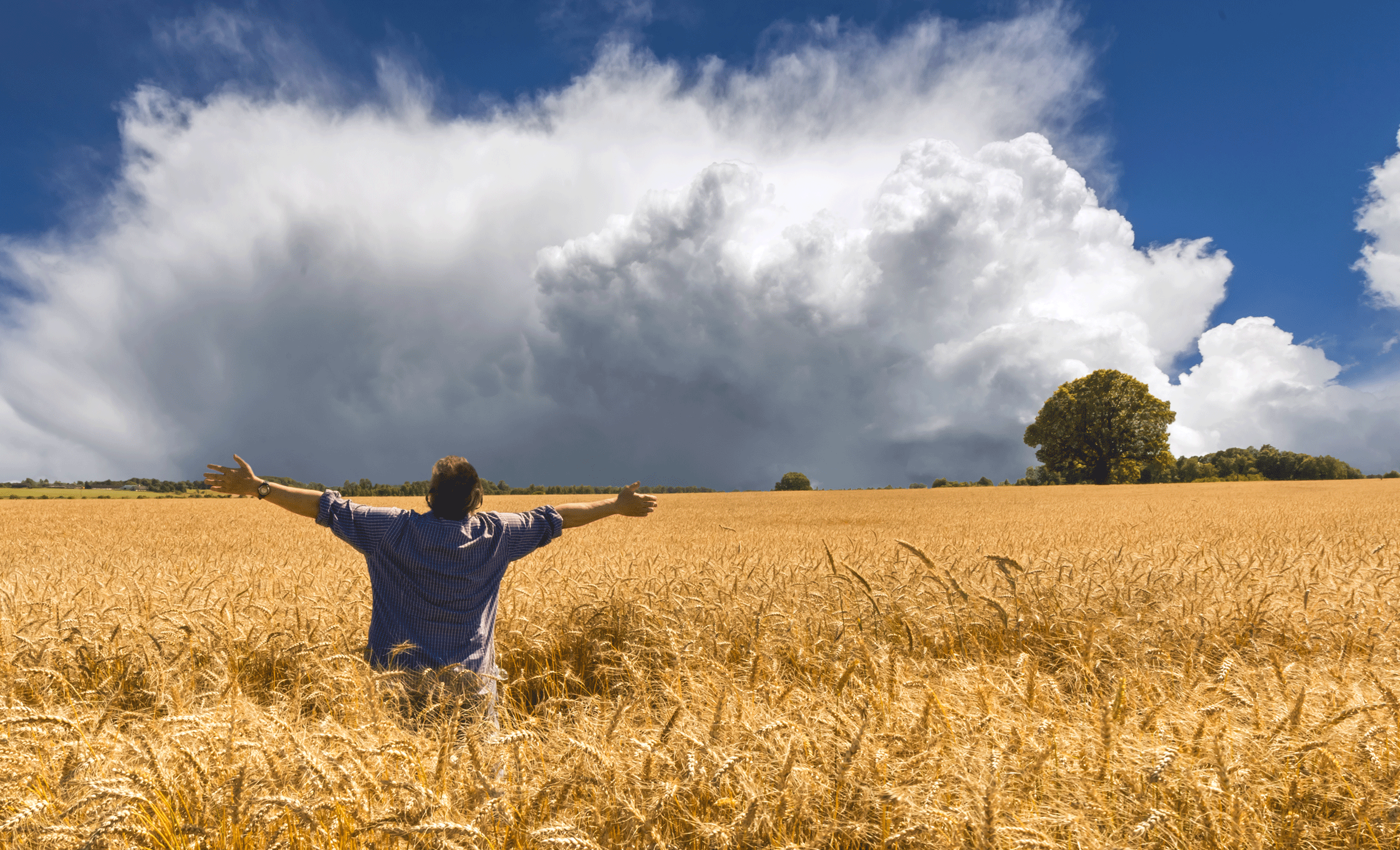
On September 25, 2018, I’ll be leading a group of up to 20 bakers and bread enthusiasts on a 12-day bakers’ tour of coastal Finland and Latvia. We’ll explore the cities and countryside, visit farms and mills, meet with national bakers’ associations. And, most important, we’ll learn from the bakers who produce some of the world’s finest rye breads. For details, visit the tour website.
Palanga Rye/Ruginė Duona iš Palangos (Lithuania)
| Rye %: | 90% |
| Stages: | Sourdough sponge, Scald, Scald-sponge (Opara), Yeast sponge, Final dough |
| Leaven: | Rye sour culture, Instant yeast |
| Start to Finish: | 24-30 hours |
| Hands-on Time: | 45-50 minutes |
| Yield: | One 3¼ lb/1.46 kg loaf |
My weakness for Baltic rye breads took over when I found this recipe in a Polish blog. Just to set the scene, Palanga is a coastal resort in western Lithuania, on the shores of the Baltic whose white sand beaches attract tourists from all over Europe, especially Poles and Germans. I suspect that this bread, which is lighter in both color and flavor that the other Baltic ryes I’ve encountered, is intended to appeal to the tastes of the town’s economically important summer visitors. Instead of the wholegrain rye flour that’s commonly used in Baltic breads, this one uses Type 1150, a much lighter blend that can be approximated by mixing 2/3 medium rye and 1/3 white rye.
Guest Post: Why Am I Marketing Baltic Rye Bread?
by John Melngailis – Partner, Black Rooster Food, LLC
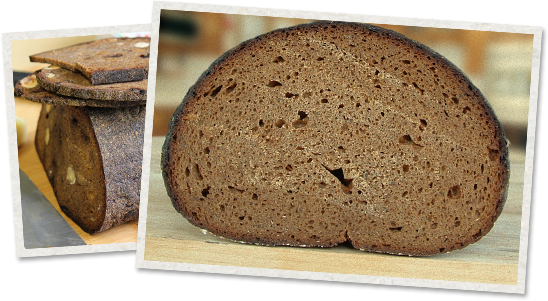
NOTE: I first met John Melngailis at Bread Furst, James Beard winner Mark Furstenburg’s Washington DC bakery. Mark had been kind enough to arrange for me to appear at the bakery to publicize The Rye Baker, and invited John, whose love of his native Latvian rye breads prompted him to found Black Rooster Food and start baking them commercially. Needless to say, John and I hit it off immediately, spending a good part of the morning talking about the marvels of Baltic rye. He was also kind enough to bring me a loaf of each of his breads — dense, sweet-sour rupjmaize, and a triangular loaf of his fruit-and-nut holiday bread, both of which were extraordinary. So when John sent me this essay on his relationship with the bread he loves, I simply had to share; it’s a fascinating read.
Muscovite Rye/Podmoskovny Rye (Russia)
| Rye %: | 69% |
| Stages: | Sponge, Final dough |
| Leaven: | Rye sour culture, Instant yeast |
| Start to Finish: | 9-10 hours |
| Hands-on Time: | 30-35 minutes |
| Yield: | One 1 ½ lb/700g loaf |
I recently was able to get hold of a couple of kilos of Russian rye flour, and so what better bread to try it out on than a Russian rye bread that specifically calls for this type of flour? The recipe comes from O Khlebe, the Russian-language blog that’s my go-to source for all breads Russian. Its name comes from its origin, Podmoskva, the region surrounding Moscow — so a northern bread with the lighter color and milder flavor associated with Russia’s largest and most cosmopolitan urban center.
Latgalian Rye/Latgaliešu Maize (Latvia)
| Rye %: | 100% |
| Stages: | Sponge, Scald, 2-Stage sponge-scald |
| Leaven: | Rye sour culture, Instant yeast |
| Start to Finish: | 28-32 hours |
| Hands-on Time: | 45-50 minutes |
| Yield: | One 3.15 lb/1.40 kg loaf |
Latgalian Rye is one of those complex Baltic breads I’d been meaning to make for some time, but life, as usual, got in the way. Finally, having found the time to devote to this flavorful, technically interesting Baltic rye, I took the plunge.
Like other Latvian rye breads I’ve eaten, this one features a dark, chewy crust, close yet tender crumb and distinctive sweet-sour flavor profile. Likewise, the use of multiple pre-doughs, including not just a sponge, but also a scald and two sour-scalds, produce enormously complex and nuanced flavors.
Auerman Borodinsky/Borodinskiy Khleb (Revised)
| Rye %: | 100% |
| Stages: | Sponge, Scald, Scald-Sponge, Final Dough |
| Leaven: | Rye sour |
| Duration: | 19-25 hours |
| Prep Time: | 60 minutes |
| Yield: | one 3½ lb. (1.6 kg.) loaf |
There are many versions of Borodinsky Rye: this one first appeared in the 1935 edition of Tekhnologiya Khlebopyekarnogo Proyzvodstva (Bakery Production Technology) by the legendary Russian process engineer Lev Auerman. Unlike most Borodinsky variations, which contain wheat flour, this one is made of 100% rye. In addition, where many of the other variations have flavor profiles that feature a combination of both sweet and sour, in this one, sweet dominates, thanks to both the long scald and floral accents of scalded caraway or anise.
Latvian Coarse Rye/Rudzu Rupjā Maize
| Rye %: | 100% |
| Stages: | Sponge, Final dough |
| Leaven: | Sour culture |
| Start to Finish: | 24-30 hours |
| Hands-on Time: | 30 minutes |
| Yield: | One 4 lb./1.80 kg loaf |
Over the months and years I’ve spent baking rye breads, I’ve developed a special fondness for Baltic ryes and for coarse-textured rustic breads. This Coarse Rye from Latvia fills the bill on both, making it one of my favorites. Interestingly, it combines bulk ferment, soaking and proofing into a single 12 to 16-hour stretch, after which the dough gets benched and baked in quick succession.
Black Rye Bread/Juoda Ruginė Duona (Lithuania)
| Rye %: | 90% |
| Stages: | Scald, Sponge, Opara, Final dough |
| Leaven: | Rye sour culture |
| Start to Finish: | 24-28 hours |
| Hands-on Time: | 30-40 minutes |
| Yield: | One 2 lb. (900 g.) loaf |
I love Russian and Baltic rye breads for their intensity. So when, a few months back, I found some imported Latvian breads at my local international grocery store, my heart skipped a beat. Although I’d baked several different Baltic ryes while researching recipes for The Rye Baker, I’d never had the opportunity to taste the real thing, and so I immediately snapped up a loaf of the “Classic Rye Bread.”
Before I even sliced the loaf, I was struck by its density and the intoxicating sweet-sour perfume that enveloped me as soon as I unwrapped it – an aroma that I hadn’t experienced in any of the Russian or Baltic ryes I’d baked until then.
- 1
- 2

